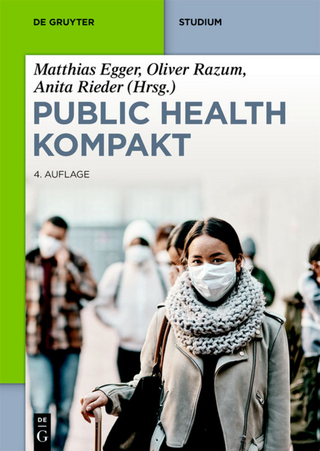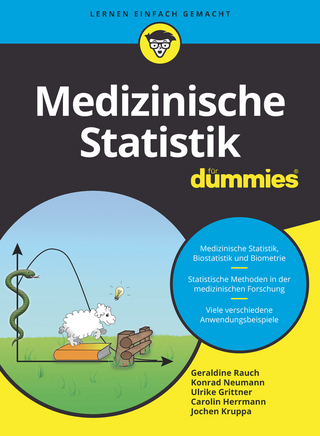
Real World Research
John Wiley & Sons Inc (Verlag)
978-1-119-52360-4 (ISBN)
»Real World Research« supplies the multidisciplinary skills necessary to conduct social research projects inside and outside of the classroom or the workplace. Offering well-balanced coverage of qualitative, quantitative, and mixed methods, this highly practical resource incorporates approaches from different social science disciplines to help readers find answers to real-life research questions in healthcare, education, business and management, and in many other public and private settings. Detailed yet accessible chapters include step-by-step advice for developing a research question, choosing a research design strategy, collecting and analyzing the data, interpreting and reporting the results, and more.
The fifth edition contains timely coverage of contemporary methodologies, key ethical issues, and ongoing debates within the field of social research. New and expanded sections address topics such as evidence-based approaches to social research, ethical considerations when conducting research involving people, carrying out projects based solely on existing research, and the importance and implications of internet-based research. Featuring a wealth of up-to-date examples drawn from a wide range of disciplines, this classic textbook:
- Focuses on useful real-world research in applied settings such as homes, schools, businesses, and other workplaces
- Provides a concise overview and a well-defined example of each main step of the research process
- Highlights the importance of collaboration, cooperation, and active participation in social research
- Explains flexible research designs using largely qualitative methods, including additional coverage of ethnographic and grounded theory approaches
- Includes an extensive companion website with numerous research examples, links to journal articles, PowerPoint slides, and many other additional resources
»Real World Research«, Fifth Edition, remains essential reading for those tasked with developing, performing, and reporting the findings of a research project, including students, academics and educators, social scientists, health practitioners, and professionals in a diverse range of fields.
Colin Robson is Emeritus Professor, School of Human and Health Sciences, University of Huddersfield, UK. He is the former Chief Consultant of the Education of Children with Difficulties, Disabilities and Disadvantages project at the OECD Centre for Educational Research and Innovation, Paris, France. Professor Robson is the author of several books including Experiment, Design and Statistics in Psychology and Small-Scale Evaluation: Principles and Practice.
Acknowledgments
Preface REMOVE ALL PAGE NUMBERSand mark shaded material
Why a 'resource for users of social research methods in applied settings?
Ways of using the book
The main steps when carrying out a project
The audience(s) for this book
PART I SETTING THE SCENE
Keeping a project diary
Chapter 1 What is real world research?
What is real world research?
Evaluation and change
Participation and collaboration
Ethical and political issues
Returning to the real world
Why do research in the real world?
Beginning the journey
Chapter 2 Approaches to social research
What is science?
Postmodernism and extreme relativist approaches
The two traditions: quantitative and qualitative social research
The quantitative paradigm
The qualitative paradigm
Paradigms and research questions
A pragmatic approach
Mixed research designs
Realism and real world research
The purposes of research
Practical value of the theoretical material covered in the chapter
PART II PLANNING: SELECTING A STRATEGY
Chapter 3 Developing your ideas
Design matters
Deciding on the focus of a project
Searching and reviewing the literature
Research questions
Developing your research question(s)
The place of theory
Chapter 4 General design issues
A framework for research design
Gtttting a feel for design issues
Choosing a research design strategy
Establishing trustworthiness 78
Chapter 5 Desk-based research 82
Types of desk‐based research 83
Doing a literature review as a desk‐based project 88
The main steps when carrying out a literature review as a desk-based project 89
Doing a systematic review 93
Doing realist reviews 97
In summary 100
Chapter 6 Fixed designs 101
General features of fixed designs 103
Establishing trustworthiness in fixed design research 104
True experiments 121
123
Quasi‐experiments 126
Single‐case experiments 134
Non‐experimental fixed designs 139
Sample size in fixed designs 144
Chapter 7 Flexible designs 145
General features of flexible designs 146
Research traditions in qualitative research 149
Case studies 150
Ethnographic studies 156
Grounded theory studies 161
Other traditions 165
Sampling in flexible designs 166
Establishing trustworthiness in flexible design research 168
Chapter 8 Mixed designs 174
The quantitative‐qualitative incompatibility thesis 175
The mixed methods movement 176
Types of mixed designs 177
Designing and carrying out mixed desjgn research 180
Pragmatism, realism or ‘anything goes’? 183
Dealing with discrepancies in findings 184
Chapter 9 Designs for particular purposes: evaluation, action and change 187
Evaluation research 187
Action research 199
Intervention and change 203
Researchers and practitioners 204
Chapter 10 Ethical and political considerations 205
Introduction
Ethical codes and guidelines 208
Ethical issues 209
Researcher safety and risk 220
Working with vulnerable groups 222
General ethical responsibilities 229
Ethical review boards and committees 231
Politics and real world research 235
Sexism, racism and social research 239
PART III TACTICS: THE METHODS OF DATA COLLECTION 241
Selecting the method(s) 241
Chapter 11 Surveys and questionnaires 243
Designing surveys 245
Carrying out a sample survey 256
Designing and using a questionnaire 258
Diaries 273
Sampling in surveys – and elsewhere 276
Probability samples 277
Non‐probability samples 279
Chapter 12 Interviews and focus groups 284
Types and styles of interviews
Advantages and disadvantages of interviews
General advice for interviewers 287
Content of the interview 288
Carrying out different types of interview 290
Focus groups 298
Dealing with interview data 305
Skills in interviewing 306
Chapter 13 Tests and scales 307
Measurement scales 307
Other scaling techniques 315
Using existing tests and scales 316
Developing your own test 317
Chapter 14 Observational methods 319
Observation in real world research 321
Approaches to observation 322
Participant observation 323
Getting started as a participant observer 327
Structured observation 332
Deciding on a coding scheme 335
The use of existing coding schemes 335
Developing your own scheme 337
338
Reliability and structured observation 343
Chapter 15 Additional methods of data collection 346
Unobtrusive measures 347
Content analysis of documents 349
Secondary data analysis 359
Introduction to a range of more specialist techniques 361
Internet‐based research 377
Feminist research methods
Multiple methods 383
Chapter 16 Writing a project proposal 385
How to recognize a good proposal 386
The content of a research proposal 387
The problem of pre‐specifying flexible design studies 391
Shortcomings of unsuccessful proposals 391
Sources of funding 392
PART IV CARRYING OUT THE PROJECT 395
Arranging the practicalities 395
PART V DEALING WITH THE DATA
Collecting the data
Analysing and interpreting data
Realist analysis and interpretation
Preparing for analysis
Analysis or interpretation?
Quantitative and qualitative data – and their integration
in mixed designs
Chapter 17 The analysis and interpretation of quantitative data
Creating a data set
Starting data analysis
Exploring the data set
Exploring relationships between two variables
Exploring relationships among three or more variables
Analysing differences
Quantitative analysis and different fixed design research strategies
The 'New Statistics'
Chapter 18 The analysis and interpretation of qualitative data
Types of qualitative analysis
Using the computer for qualitative data analysis
Dealing with the quantity of qualitative data
Thematic coding analysis
Data analysis in grounded theory studies
Alternative approaches to qualitative analysis
Integrating qualitative and quantitative data in mixed designs
Chapter 19 Reporting, disseminating and moving forward
Reporting what you have found
Ethics and reporting
Reporting fixed design research
The scientific journal format
Reporting flexible design studies
Reporting on mixed design studies
Reporting on case studies
Reporting on literature reviews
Writing for non‐academic audiences – the technical report
Alternative forms of presentation
Writing skills
Where next?
Appendix A: Using specialist software for quantitative analysis
Appendix B: Using specialist software for qualitative analysis
References and author index Visit the website to view
the References and Author Index, www.wiley.com/college/robsonCHECK
Subject Index
| Erscheinungsdatum | 04.05.2024 |
|---|---|
| Verlagsort | New York |
| Sprache | englisch |
| Maße | 187 x 235 mm |
| Gewicht | 1389 g |
| Einbandart | kartoniert |
| Themenwelt | Geisteswissenschaften ► Psychologie ► Statistik / Evaluation |
| Studium ► Querschnittsbereiche ► Epidemiologie / Med. Biometrie | |
| Naturwissenschaften ► Chemie | |
| Sozialwissenschaften ► Soziologie ► Mikrosoziologie | |
| ISBN-10 | 1-119-52360-5 / 1119523605 |
| ISBN-13 | 978-1-119-52360-4 / 9781119523604 |
| Zustand | Neuware |
| Haben Sie eine Frage zum Produkt? |
aus dem Bereich


